
The 4 P’s are a concept from the business world that helps you define your business offerings and create the best individualized marketing strategy possible.
What are the 4 P’s of Marketing?
The 4 P‘s stands for:
- Product
- Price
- Place
- Promotion
All aspects of marketing can be categorized under one of these 4 terms. According to conventional marketing wisdom, optimizing each of these 4 categories is a successful strategy for marketing.
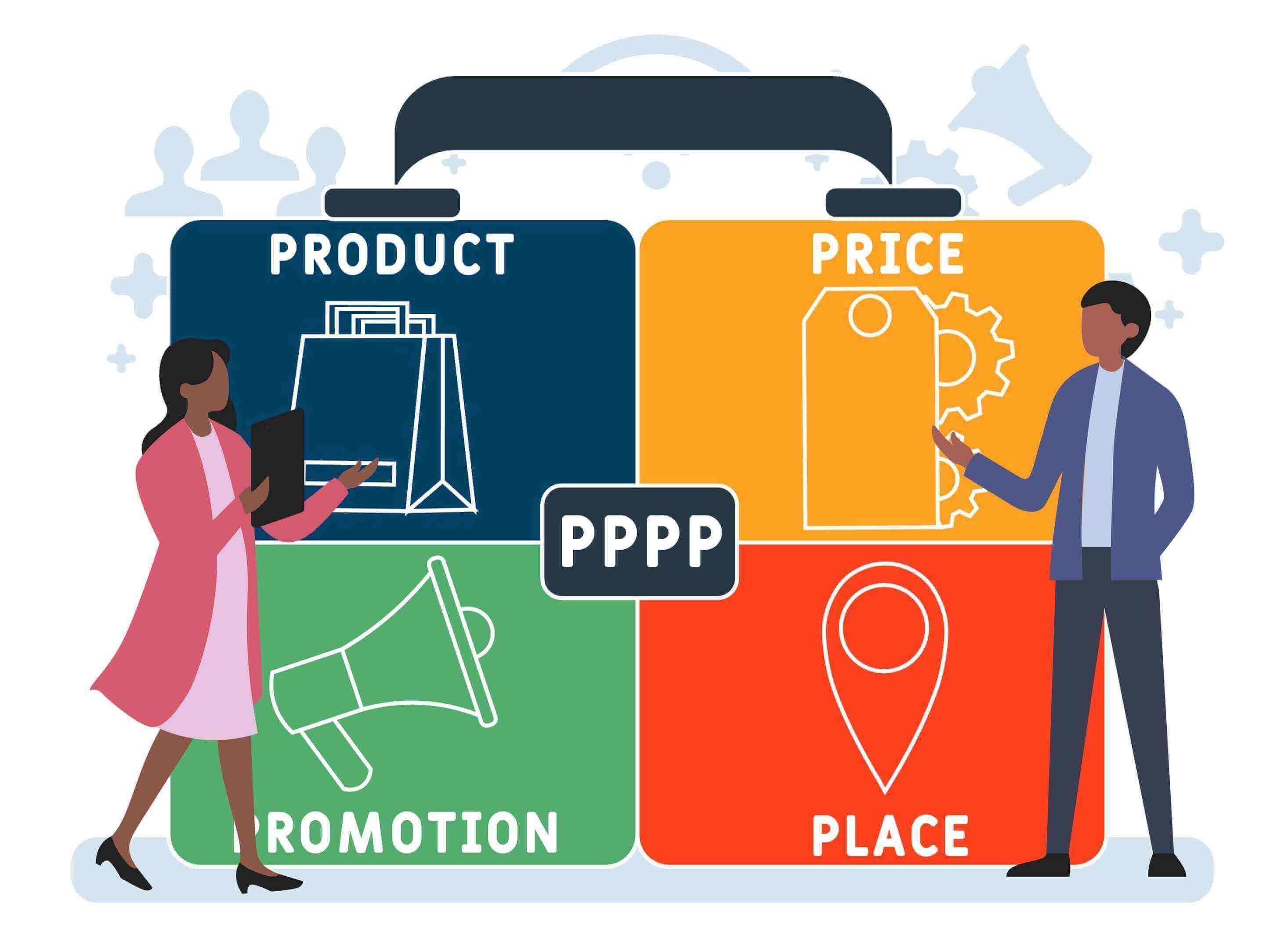
Marketing Mix Definition
Because each of the 4 P’s are supposed to work together like ingredients in a recipe, the 4 P’s are also called The Marketing Mix.
What is the marketing mix? Just your business’s unique blend of the 4 P’s to create your own custom recipe for marketing success.
History of the 4 P’s
The term “marketing mix” came first, when Harvard professor James Culliton used the recipe metaphor to describe the components of marketing in a 1948 paper. The book The Concept of the Marketing Mix further refined the idea and by 1960 the elements had been reduced to the 4 P’s we know today.
This concept has proved remarkably useful through the decades, even as businesses move increasingly online.
The First P of Marketing: Product + Example
Defining your product is the first step in determining your unique marketing mix. What do you sell or provide to the customer?
This can be a physical product like cars or hair accessories; a service like business consulting, or even a digital product like a membership to an online forum.
The marketing mix 4P approach suggests that you clarify your product as much as possible by defining the following attributes:
- Who is my target customer?
- What are they searching for?
- How does my product meet their needs?
- What makes my product distinctive?
- What makes my product stand out from competitors?
- What are my product’s features?
- What are my product’s benefits?
This will help you craft the most appealing description of your product and drive more consumer interest and sales.
4 P’s of Marketing Example: Product
Let’s take a barbershop that caters to families with young children. Their product is - obviously - haircuts.

Applying the 4 Ps, the barbershop might describe its product this way:
“We know your kids may be nervous about a new haircut. We offer a fun, no-pressure shop where your kids can watch their favorite cartoons from our custom-painted chairs. Our trained stylists can give your little ones the latest style or just a trim quickly and easily. It’s so much fun, your kids will want to come back every week!”
In this example, the barbershop is offering a very ordinary product -haircuts. But they know that their target customers are parents who are worried about their children not sitting still for haircuts. Therefore, they position their product as unique - a “fun” haircut.
The Second P of Marketing: Price + Example
Much ink has been spilled determining the pricing sweet spot for any given product. The marketing mix strategy acknowledges that different businesses will use different pricing strategies.
- Premium pricing - especially for “luxury” or “premium” brands
- Undercutting competitors
- Offering a loyalty program
- Offering purchase points redeemable for rewards
- Coupons
- Sales
- Free shipping
- Bonus offers/free gift with purchase
- Entry-level pricing
- Accepting credit or pay-later systems
- Financing
4 P’s of Marketing Example: Pricing
Google now offers a range of smartphones that are positioned to compete with the iPhone.
![]()
We can see that Google is using several pricing strategies here to promote the Pixel:
- Financing
- Trade-in old phone for purchase credit
- Free shipping
- Added products (phone protection; Google One storage)
As part of the 4ps, Google is choosing pricing strategies that will appeal the most to its customers: those who want a good phone but still want a deal and those who want easy integration with their existing Google products.
The Third P of Marketing: Place + Example
Since a big part of the marketing mix definition is place, it’s not a relevant concept in the digital age, right? Not quite.
Keep in mind that some businesses will always be local: you can’t hire a remote plumber, for example.
Furthermore, around 70% of Americans say that shopping locally is important to them. So actual geographic location is still quite important.
That said, over 80% of consumers worldwide shopped online. Unquestionably, customers are online. But located exactly where online will be a key to deciding where to place your product’s promotion.
The Third P of marketing refers more to where your product is marketed than your actual physical location. This means finding where your customers spend time online and placing your product there.
Do your target customers frequent any of the following sites:
- TikTok
- Snapchat
- YouTube
Determining this will rely primarily upon your demographic research, but competitor research can help too.
Are your competitors placing their products on Facebook? Have they ignored Instagram because your audience doesn’t spend time there, or is this an opportunity for you to locate your product near customers but away from competition?
4 P’s of Marketing Example: Place
Popular skincare brand Curology uses the marketing mix to reach its target customer on social media. The company’s headquarters is in San Francisco, but that is irrelevant to the “place” component 4P.
Curology sells customized skincare 100% online, so it places its promotions where customers are - social media.
Take a look at the promoted ad from Facebook below:
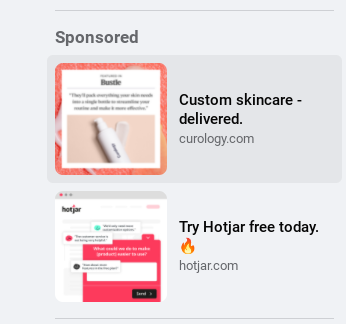
This ad uses the marketing mix concept well because it summarizes the product by highlighting a few of its key benefits - it's customizable, and it’s delivered to you (which means convenient).
The ad is placed on a site that people check almost reflexively, so they are likely to see the ad and follow it for more information on the brand.
Next, we’ll turn to the final element of the marketing mix definition: promotion.
The Fourth P of Marketing: Promotion + Example
The 4Ps wouldn’t be complete without promotion. This refers to how you reach your customers and what strategies you use to incentive purchases.
This may include some of the following tools and types of digital marketing:
- Search engine marketing
- Direct emails
- Targeted ads
- Content marketing
- Word of mouth
- Influencer marketing
- TV
- Magazine
- Billboards
- Direct Mail
- Radio
Anything that gets your product in front of your target audience is part of your marketing strategy.
Now, many new businesses are inclined to go for all the promotion strategies.
As any seasoned marketer can tell you, this is a waste of time and effort. It’s better to research which strategies work best for your product and audience and build quality promotions.
Remember, The 4 Ps of marketing maintain that each business has its own unique recipe. Just because billboard advertising works great for the auto repair shop down the street doesn’t mean it will work for your marketing consulting firm.
4 P’s of Marketing Example: Promotion
Email marketing is an effective strategy, with studies showing it has some of the highest return on investment of all digital marketing strategies.
Here is how an online vitamin company, Puritan’s Pride, used email marketing over a holiday weekend sale:

In this image, you can see how the company is using price to incentivize a sale in the form of 75% off.
The promotion comes as an email. These are quickly skimmed, so this promotion is visual and easy to scan, relying on images rather than text to get its message across quickly before the potential customer moves on to a different email.
Do You Know the 4Ps of Your Business?
Does your business have a well-defined marketing mix? Here are some ways you can tell:
- Your marketing goals are clearly defined
- You have a strong brand voice
- You know what percentage of business occurs in-person and online
- You know what online channels your customers frequent
- You are clear about your product(s) benefits
- You’ve invested in market and competitor research
- You have chosen your distribution channels
- You have a clear pricing strategy
If your business is fuzzy on some of these basics, you probably need to revisit your unique marketing mix.
How to Apply the 4Ps in Your Own Business
So - what is the marketing mix you should be using?
Your marketing mix may be different for any given product or phase of your business growth. Ideally, you will be determining your mix before you even finish developing your first product.
This is because you want to make sure you are actually offering something customers need.
Step 1: Research: Customers, Competition, and Market
- What products or services are people looking for?
- Is there dissatisfaction with the current offerings?
- How can you offer something distinctive?
- What is your competition doing well and poorly?
Step 2: Determine your Pricing Strategy
- Will you position your product as a luxury/premium offering?
- Will you undercut existing prices?
- Do you plan to offer customer loyalty incentives?
- Do you plan to offer free services or loss leaders?
- Do you anticipate raising prices over time?
Step 3: Placement
- What are your primary distribution channels?
- Online, in-person, or hybrid purchase offers?
- Will you need a physical location for promotion?
- Do you plan to work through wholesalers and retailers?
- What online channels will you place your ads on?
Step 4: Determine Promotional Strategies
- What is your promotional budget?
- Do you have a digital promotion strategy?
- What promotions are most effective with your target audience?
These are a lot of questions to ask. The more time and thought you can invest in the front-end of developing a new product, the more specific you can be about your approach to business.
Ultimately, this means you can more effectively track the success of your chosen strategy and determine what is and is not working.
Case Study: The 4Ps of SEOptimer.com
Since we are a marketing company, after all, let’s use the SEOptimer website as an example of the 4 P’s at work.
4 P’s of Marketing: Product
SEOptimer offers numerous tools to make online marketing easier. One of our key products is the SEO Audit and Reporting Tool.
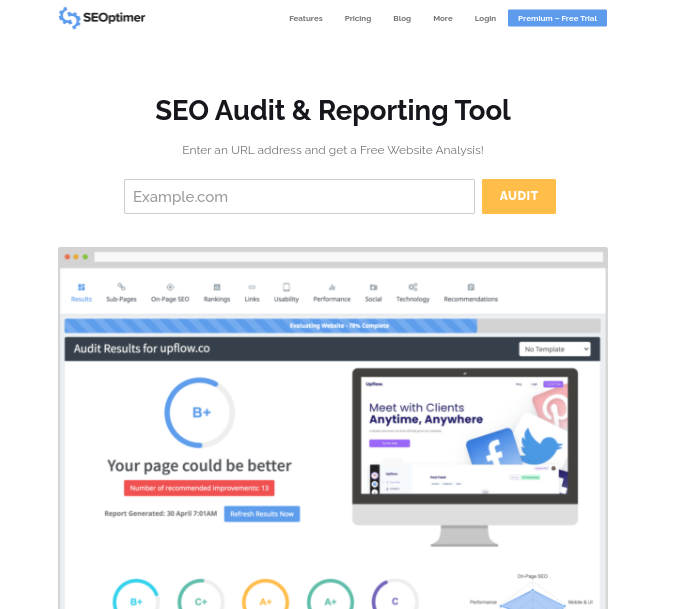
The headline of this page immediately tells visitors what they will get: a free, comprehensive SEO audit of their URL. When visitors scroll down, they learn the features and benefits of this product.
Search Engines rely on many factors to rank a website. SEOptimer is a Website SEO Checker which reviews these and more to help identify problems that could be holding your site back from its potential.
Additionally, we provide a clear, actionable, prioritized list of recommendations to help improve.
This further defines the value of the product for potential customers and increases their chances of trying it out.
4 P’s of Marketing: Price
SEOptimer offers the free SEO audit tool (and lots of other SEO tools), as part of a “freemium” strategy. This means that our tools are freely available, but advanced features require a paid subscription.
This is a pricing strategy. We also offer paid SEO consulting services. Customers use our free tools, which builds their confidence in us as digital marketing experts. If they need professional services, they are then more likely to turn to our company.
4 P’s of Marketing: Place
Since our products are digital, they are accessible from anywhere in the world. For a company like ours with a global reach, “place” is more about reaching customers digitally.
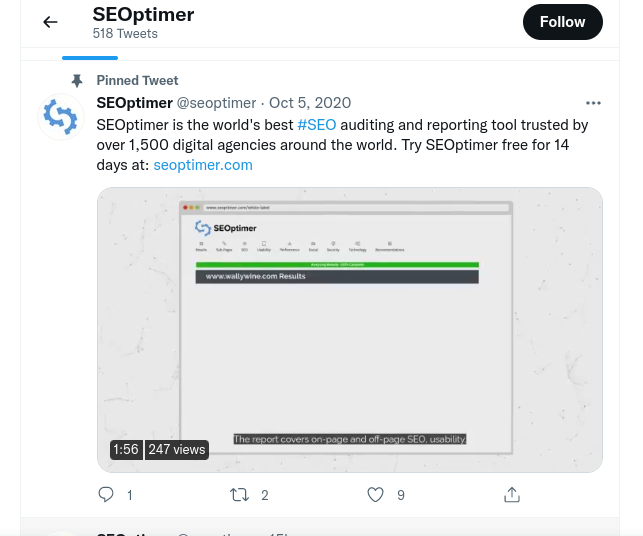
Maintaining a strong presence on multiple social channels is one way we do this. Another is by focusing on our SEO strategy, which reaches costumes across the world, rather than in one limited geographic location.
4 P’s of Marketing: Promotion
While SEOptimer uses multiple promotional strategies, one good example is our organic search strategy.
Not only do we provide free and paid SEO tools, but we also offer valuable guides, articles, and how-tos to our customers.
This content is indexed by Google and other search engines, making it more likely that potential customers will find our content, read it, and then engage with our brand.
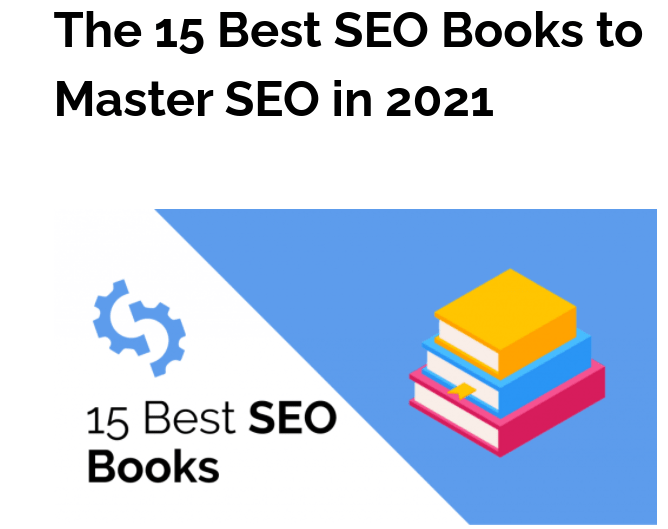
The 4P’S - Find Your Custom Marketing Recipe
The 4 P’s of marketing have successfully guided marketers for over 6 decades. Far from being obsolete, combining these 4 elements is a tried-and-true method of defining your business’s overall goals and strategy.
Try this exercise today: see if you can clearly define the 4 P’s for any given product in your company:
- Product
- Price
- Place
- Promotion
If you’re clear on these 4 elements, then chances are you have the marketing mix for your business mastered.










